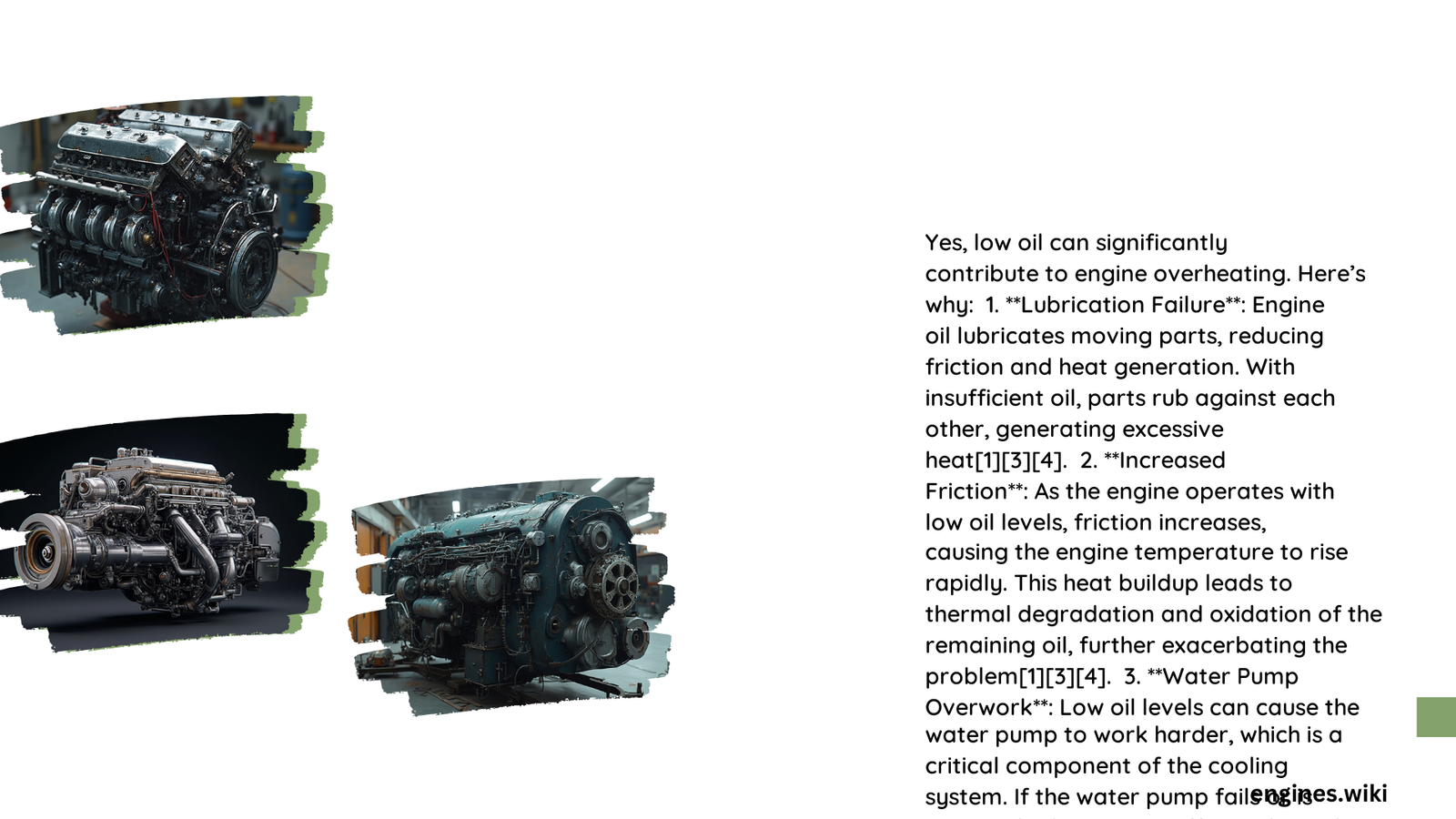Low oil levels can significantly impact engine temperature, creating a dangerous scenario where friction increases, lubrication decreases, and heat accumulates rapidly. When engine oil drops below recommended levels, mechanical components experience increased resistance, generating excessive heat that can potentially lead to catastrophic engine failure. Understanding this critical relationship between oil levels and engine temperature is essential for preventing costly repairs and maintaining vehicle longevity.
What Happens When Oil Levels Drop?
Low oil levels create a cascade of thermal and mechanical challenges within an engine’s complex system. Here’s a comprehensive breakdown of how insufficient oil impacts engine temperature:
How Does Low Oil Cause Engine Overheating?
- Friction Multiplication
- Reduced lubrication increases metal-to-metal contact
- Mechanical components generate more heat through increased resistance
-
Friction coefficients can rise exponentially with decreasing oil volume
-
Heat Dissipation Challenges
- Oil serves as a critical heat transfer medium
- Low oil levels impair the engine’s ability to distribute and dissipate thermal energy
- Temperature can escalate quickly without adequate lubricant circulation
What Are the Immediate Risks of Low Oil?
| Risk Level | Temperature Range | Potential Consequences |
|---|---|---|
| Moderate | 120-140°C | Increased wear, reduced performance |
| Critical | 140-180°C | Potential engine seizure, component failure |
| Catastrophic | 180°C+ | Complete engine destruction |
What Symptoms Indicate Low Oil and Potential Overheating?
- Dashboard oil pressure warning light
- Burning smell from engine compartment
- Unusual engine knocking or ticking sounds
- Visible smoke from engine area
- Rapid temperature gauge elevation
Why Oil Levels Directly Impact Engine Temperature

The relationship between oil volume and engine temperature is fundamentally mechanical. Engine oil performs multiple critical functions:
- Lubrication
- Reduces friction between moving parts
- Prevents direct metal-to-metal contact
-
Minimizes heat generation through smooth mechanical interaction
-
Thermal Regulation
- Absorbs and distributes heat across engine components
- Acts as a cooling medium
- Helps maintain consistent operational temperatures
How Quickly Can Low Oil Cause Damage?
- Short-term exposure (15-30 minutes): Potential accelerated wear
- Continuous low oil: Severe engine damage within 1-2 hours
- Complete oil loss: Potential engine seizure in minutes
Preventative Maintenance Strategies
- Check oil levels monthly
- Use high-quality engine oil
- Replace oil filters regularly
- Monitor oil condition and viscosity
- Address leaks immediately
Professional Recommendations
Automotive experts universally agree that maintaining proper oil levels is the most cost-effective engine preservation strategy. Regular inspections and proactive maintenance can prevent expensive repairs and extend vehicle lifespan.
Conclusion
Low oil levels represent a critical threat to engine health, directly causing increased temperatures and potential mechanical failure. Vehicle owners must prioritize consistent oil maintenance to ensure optimal performance and longevity.
